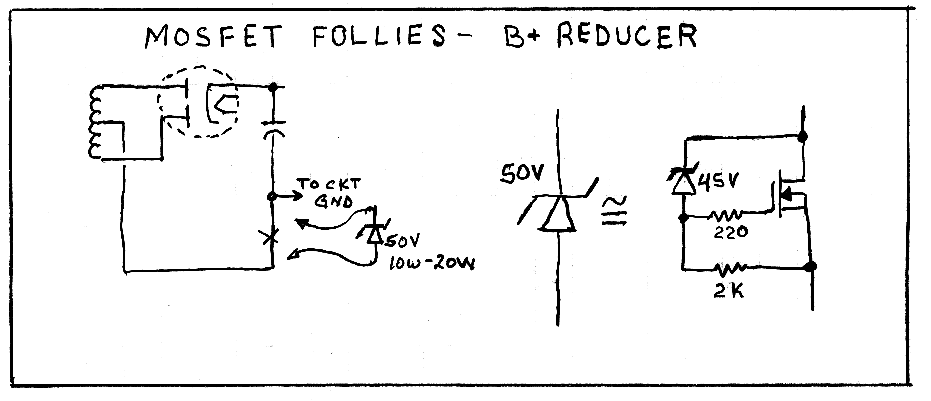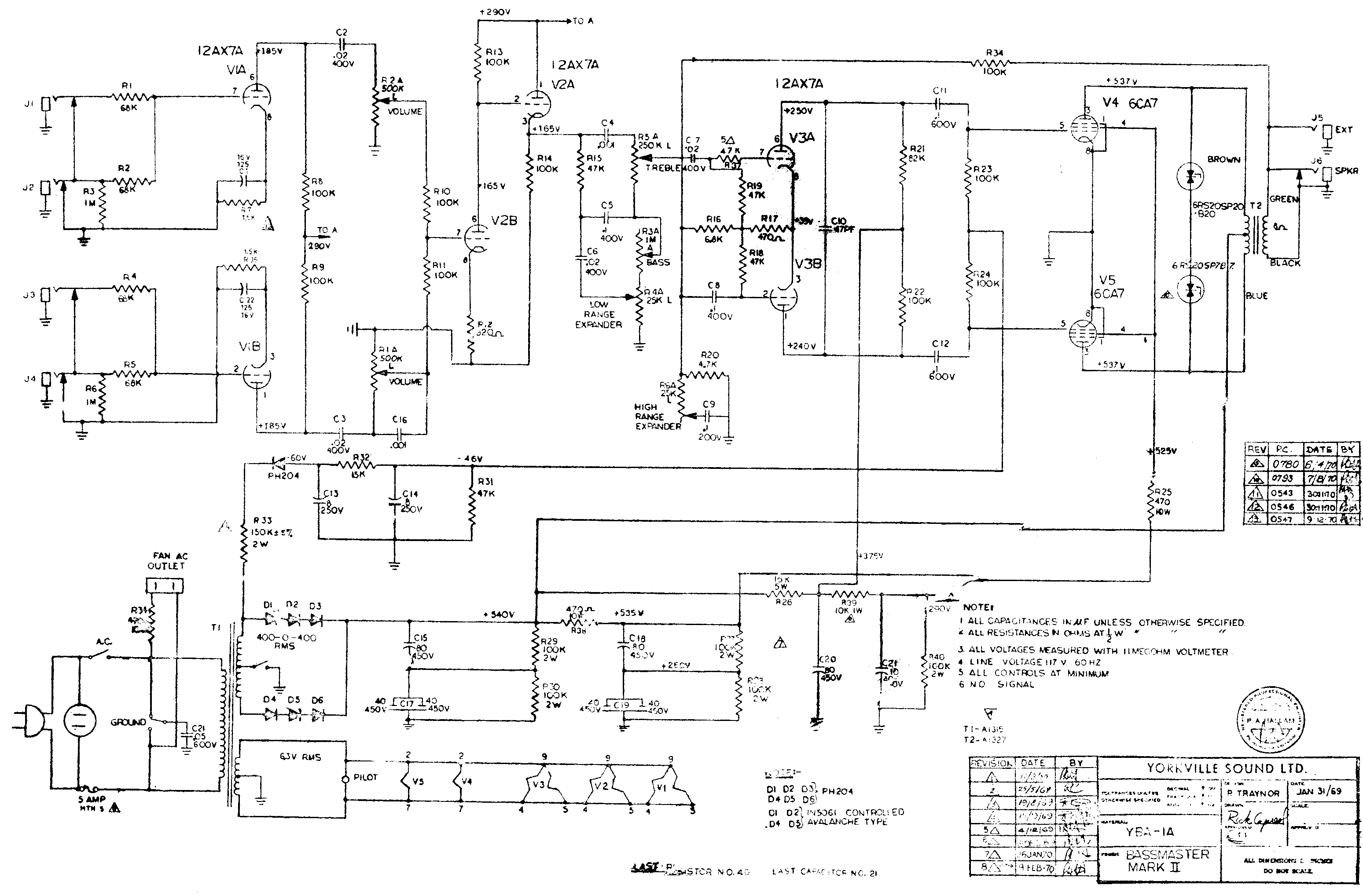rockinrob86
Well-known member
I'm working on a Traynor YBA-1A and the screens are running at around 560VDC. This is an earlier one, and according to the schematic should be at 525 - but I am running around 122-125 VAC at my place, and according to my calculations it would've originally ran a little hot to begin with.
Heaters are at 6.9 (I think - typing this from memory.)
I really would like to bring this down to at least the factory specs, and get the heaters in line. Then maybe try to knock the 25vdc extra off of the screens
It is blowing EL34s, and I can't really afford to just let it keep popping $40 tubes . Clearly, 570 is too much!
In looking around for a solution, I have come across RG Keen's Mosfet Follies article - http://www.geofex.com/Article_Folders/mosfet_folly/mosfetfolly.htm
with the following circuit for using a mosfet power transistor on the PT CT

The thing is, I have not worked with Mosfets and do not understand what limitations I am under/how exactly this works. I don't know which mosfet to choose!
Is it one of these? http://www.digikey.com/product-search/en/discrete-semiconductor-products/transistors-fets-mosfets-single/1376381?k=power+mosfet&k=&pkeyword=power+mosfet&pv588=120&FV=1140050%2C930004e%2C9300078%2C9300079%2C9300111%2C930015f%2C9300313%2C93005aa%2C9780013%2Cfff40015%2Cfff8007d%2C1f140000&mnonly=0&newproducts=0&ColumnSort=588&page=1&stock=1&rohs=1&quantity=0&ptm=0&fid=0&pageSize=25
Heaters are at 6.9 (I think - typing this from memory.)
I really would like to bring this down to at least the factory specs, and get the heaters in line. Then maybe try to knock the 25vdc extra off of the screens
It is blowing EL34s, and I can't really afford to just let it keep popping $40 tubes . Clearly, 570 is too much!
In looking around for a solution, I have come across RG Keen's Mosfet Follies article - http://www.geofex.com/Article_Folders/mosfet_folly/mosfetfolly.htm
with the following circuit for using a mosfet power transistor on the PT CT

The thing is, I have not worked with Mosfets and do not understand what limitations I am under/how exactly this works. I don't know which mosfet to choose!
Is it one of these? http://www.digikey.com/product-search/en/discrete-semiconductor-products/transistors-fets-mosfets-single/1376381?k=power+mosfet&k=&pkeyword=power+mosfet&pv588=120&FV=1140050%2C930004e%2C9300078%2C9300079%2C9300111%2C930015f%2C9300313%2C93005aa%2C9780013%2Cfff40015%2Cfff8007d%2C1f140000&mnonly=0&newproducts=0&ColumnSort=588&page=1&stock=1&rohs=1&quantity=0&ptm=0&fid=0&pageSize=25



